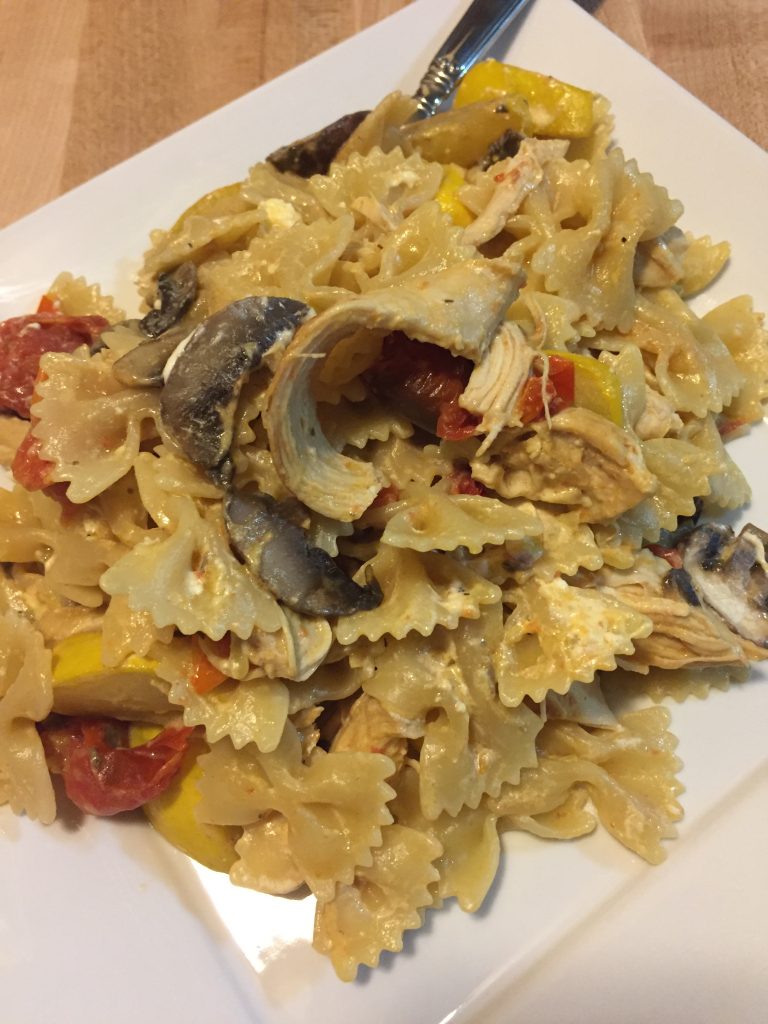
Pasta is my go-to dinner. I keep 2–3 varieties on hand at all times, plus a sampling of add-ins. Since it’s my favorite food, I’ve had lots of practice. Here is what I’ve learned:
Ten Pasta Tips
1. Choose your pasta carefully. You’ve probably heard that pasta is shaped to compliment certain sauces. In general, I adhere to the following guidelines:
- If there are other ingredients that you would stab with a fork, use pasta that you would stab with a fork.
- If you are using a cream sauce, use pasta that will feel smooth in your mouth.
- Spaghetti does go well with meatballs.
- If you are using pesto, choose a pasta with lots of nooks and crannies.
- If you have homemade or fresh pasta, use a light sauce so the flavor of the noodles comes through.
2. Salt the water heavily. As my favorite cookbook says, you want the water to taste like the sea. Quite apart from lowering the boiling point, salting the water imparts an even flavor to the noodles that you won’t get if you just sprinkle salt over your dinner before tucking in.
3. Bring your water to a simmer, not a boil. You want your noodles to finish cooking at the same time as whatever sauces, meats and vegetables you plan to put with them. However, pasta can cook in anywhere from thirty seconds (fresh homemade pasta) to twelve minutes (trottole and the like). Hold the water at a simmer, just below boiling, and wait to kick it to a boil and add pasta until you think that everything else needs the same amount of time to finish. Water evaporates rapidly once it boils, so don’t let it boil for too long without pasta or you’ll end up needing more water.
4. Reduce heat after adding the noodles. If you forget this step, your water will boil over and your stove will smell like burnt flour.
5. Use a wooden spoon to check for doneness. I learned this tip from an Italian friend: you will know it is done when the feel of the pasta knocking into the spoon is gentle rather than firm. (If you can’t feel the pasta hitting the spoon at all, it is probably well past al dente.)
6. Add olive oil after straining. Olive oil is healthy and flavorful and will keep your pasta from sticking together. (This means you should return the pasta to the pan if you need to let it sit instead of leaving it in the strainer.)
7. If using fresh or stuffed pasta, do not strain. Remove it from the water with a spider or slotted spoon and transfer it directly to the pan with the sauce. These pastas are fragile and need careful handling.
8. Mix pasta with extras in a pan, not a plate. If I’m sautéing mushrooms, spinach, zucchini, etc., I pour the pasta into the skillet with those ingredients and mix over low heat. You’ll get a more even distribution of sauce.
9. Let the pasta rest before serving. If you’ve adopted suggestion no. 8 and mixed the pasta in a skillet with other ingredients, let it sit for an extra minute over low heat to allow flavors to concentrate.
10. Consider overcooking angel hair. Personal preference, yes, but I like the melt-in-the-mouth sensation of overcooked angel hair, especially with cream.
Want to get inspired? Check out this page for pictures of dozens of varieties of pasta.


